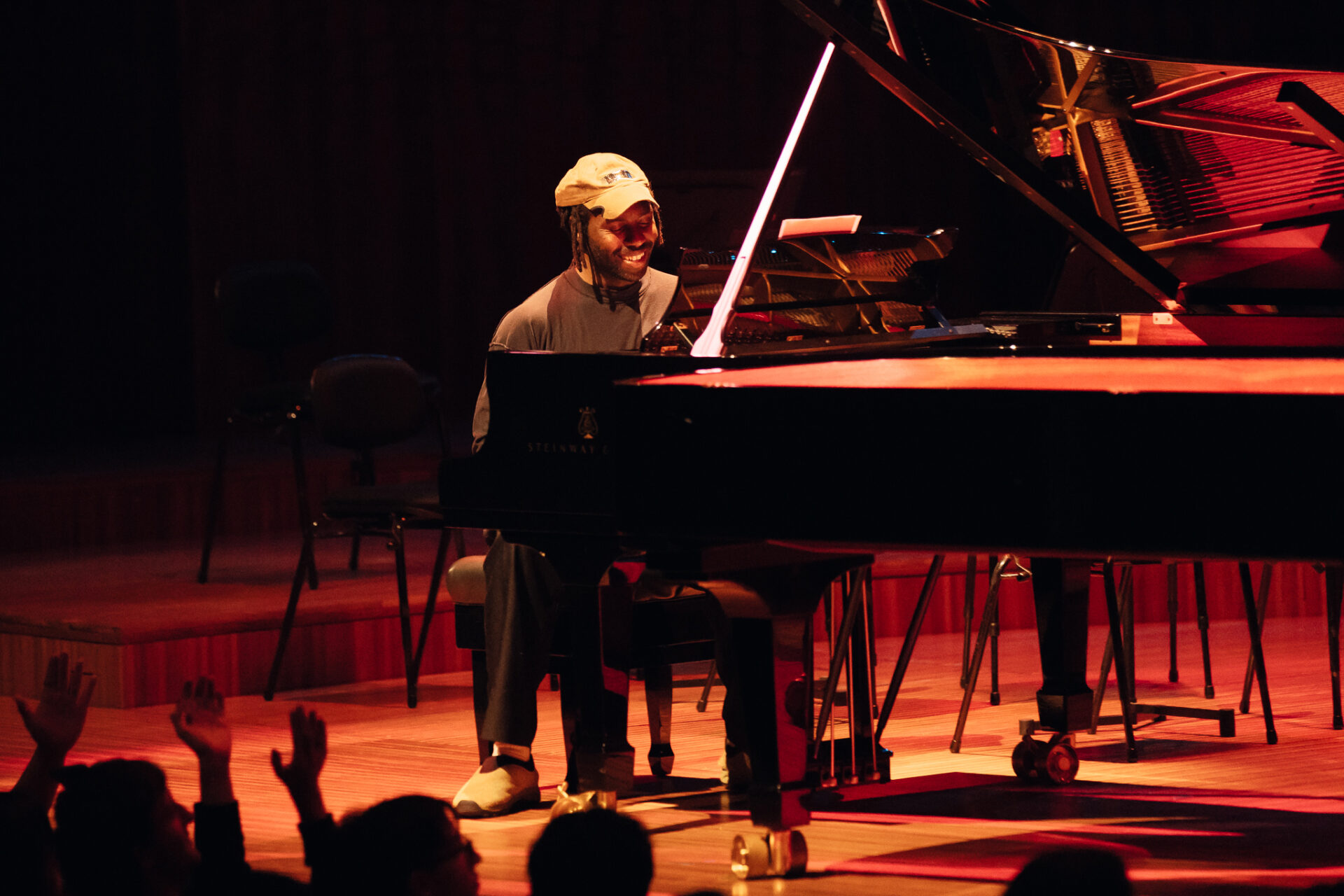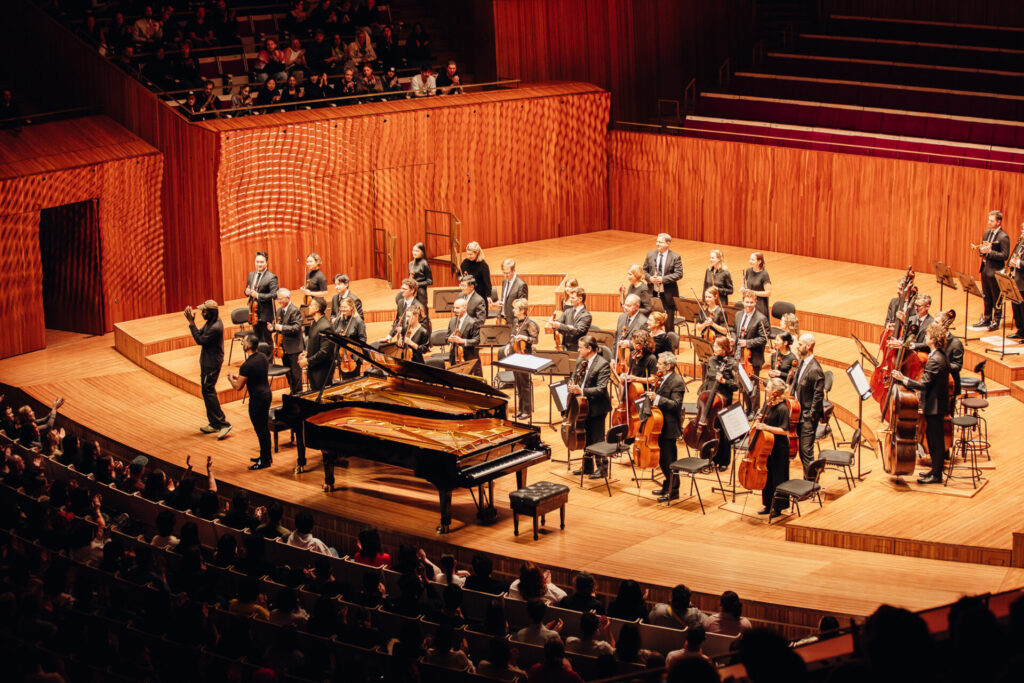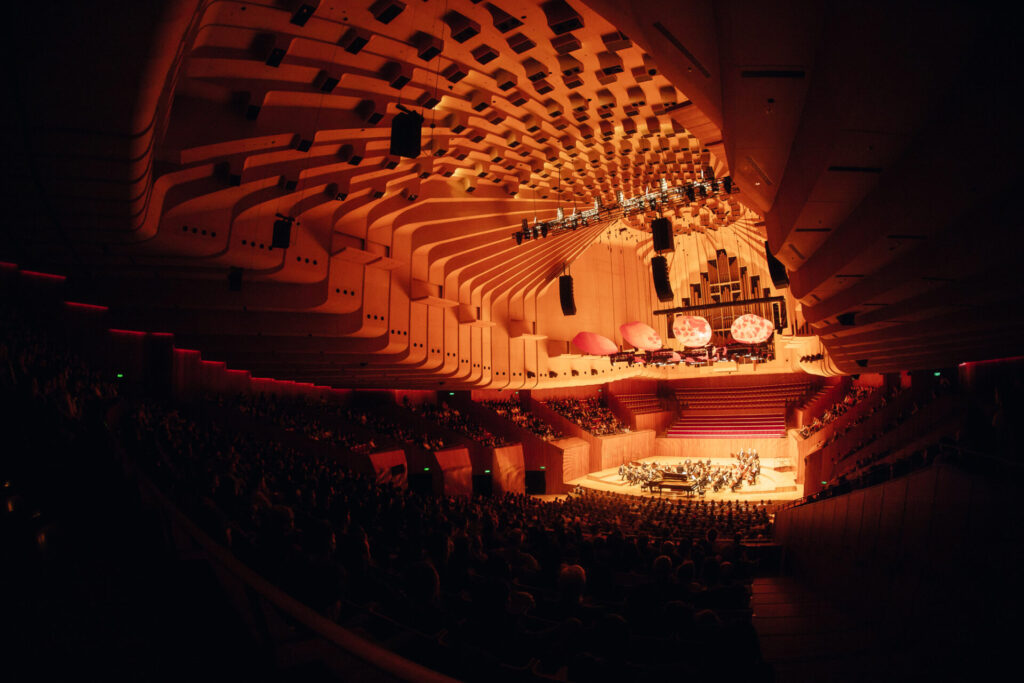Devonté Hynes’ highly anticipated premiere at VIVID Live demonstrated his versatility as a composer and his humility as an artist

As soon as I walked up the steps of Concert Hall to take my seat for Devonté Hynes’ show, I could sense the audience’s excitement. The stalls were buzzing with chatter as people purchased their final drinks and began to settle. I couldn’t help but notice the minimal setup on stage: a grand piano and a yellow-tinted light beaming from above. As the aisle lights began to dim and the audience’s conversations came to a murmur, the stage was set, the piano now highlighted by a single spotlight. Welcomed by a sea of applause, Hynes appeared from the side, taking a short bow and then approaching the piano. After a deep breath and a quick stretch, he proceeded to softly play Untitled III for Solo Piano. Gentle in its tone, the composition featured a cycling chord structure performed with a rubato expression. Continually rising in intensity before quickly resolving, the piece’s dynamic focus was the perfect opening to the night, foreshadowing the scope of Hynes’ compositional quality.
After a round of applause and a brief break, the Sydney Symphony Orchestra took stage with the piano being wheeled off to the side. The orchestra was led by British/German conductor Matthew Lynch, rendering Hynes an audience member as his first symphonic composition, Naked Blue, began. The piece was centred around the expressive strings section, which took turns to introduce new colours of dissonance to extended chords that seemed only to ask questions and not provide answers. The open-ended exchange of sound eventually introduced the richer timbres of the orchestra’s brass and percussion sections, adding what felt like a deep emotional weight to an already moving performance. It is no surprise that this long-form piece was the orchestral opening to a series of compositions aiming to explore the complexities and ambiguities of our 21st-century identity. Discomforting enough for some audience members to leave mid-performance, the composition placed all of its cards on the table and painted the picture of a complicated relationship between the modern world and a composer attempting to navigate his way through it.

After a necessary intermission and reorganisation of the stage, Hynes came back with fellow collaborator and pianist Adam Tendler to perform The Long Ride II for 2 Pianos. The composition featured two duelling grand pianos, with both performers listening and bouncing off each other. The piece had a transcendent tone that was reminiscent of some of my favourite pieces from modern composers such as Max Richter and Ólafur Arnalds. Ten minutes in length, the hope-fueled piece was just as animated as its performers, featuring high-octave glissando keys accompanied by deeper, euphoric chords. As the piece slowly lowered in volume and came to a close, as if fading off into the distance, the two performers began the next composition, Morning Piece for 2 Pianos. Of the two pieces, this seemed more like an ode to traditional piano pieces, featuring a clearer structure with recurring melodic motifs and striking chordal modulation. The composition was built beautifully, with both pianos rhythmically ascending to an epic climax. After, as the piece lowered in intensity, dynamically dropping down to just a single piano note of softer major chords, the room became silent. Collectively absorbed in the kaleidoscopic journey that Hynes and Tendler had taken us on, I could almost hear the inhales of the audience members on both sides of me. While the arrangement and production quality in much of Devonté Hynes’ discography are aptly acclaimed, this specific section of his performance truly exemplified his ability to take listeners on a personal, emotionally potent expedition through his compositional quality on a single instrument.
Happenings was the finale of the performance and featured a combination of piano and orchestra. Just short of 20 minutes, the piece was romantic in its sentiment, prompting memories of classic Disney animations. With dense harmonic structures, growing polyrhythmic intensity, and extended techniques for piano, this piece felt like the perfect close to the show, showcasing Hynes’ ear for clever arrangement and forward-thinking constructions. After a short thank you speech to the audience and everyone involved, Hynes played a rendition of a song by American composer, pianist, and vocalist, Julius Eastman, who was said to be a big inspiration to Hynes.

To Boot or Not to Boot: In Defence of Mike Skinner’s Antics at Golden Plains
By Anna Stewart
For Volume, Jonathan Wilson Expands on the Boundaries of What an Artist Actually Is
By Rachel Weinberg
Overmono
By To Be
Stepping Out To See Within
By Hugh Barton
Charlotte de Witte: In the Age of Techno
By Rachel Weinberg
Heaps Good Festival Is Bringing in the New Year with a BANG
By Anna Stewart
